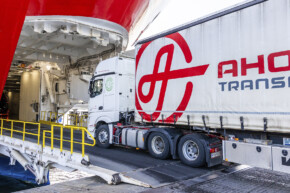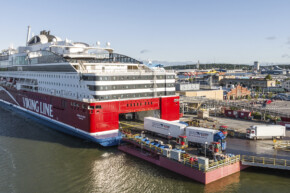Choreography for steel pipes was planned carefully
The massive steel pipes that will be used in the piling of the quay of the new joint terminal have arrived in Turku. Port operator Finnsteve handled the demanding unloading that required careful planning.

The lifting straps of mobile cranes have been set in place. A nearly 50 metres long steel pipe rises slowly but surely from the hold of cargo ship Nordvliet. The pipe is laid down to rest on its bed on the quay for a while and then it is moved to nearby field area by a couple of forklifts.
Risto Välimäki, Shift Manager of port operator Finnsteve says that the ship has brought as many as 209 massive pipes from Turkey to Turku.
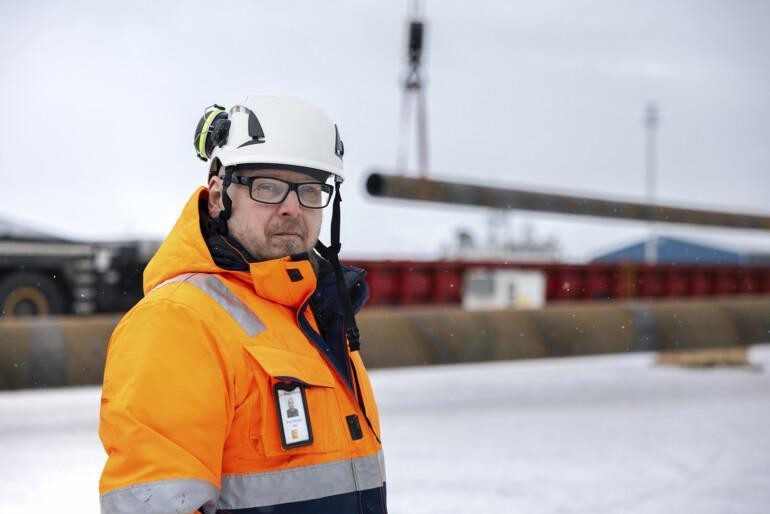
“Yesterday we unloaded the 25 pipes placed on the deck. Now we will be busy with the cargo in the hold for another three days or so.”
On a February morning, it took a while to melt the frozen deck with hot steam and undo the fastening straps of the load.
“In Turkey the loading of the ship took four days”, Mr Välimäki mentions.
Unique of its kind
Having worked in the port for nearly 30 years, Mr Välimäki says that the unloading of Nordvliet is unique of its kind.
“I have never participated in the handling of such long pipes. The operation had to be planned carefully in advance, with all the other parties involved in the work, of course. The most important thing is that everything is done safely.”
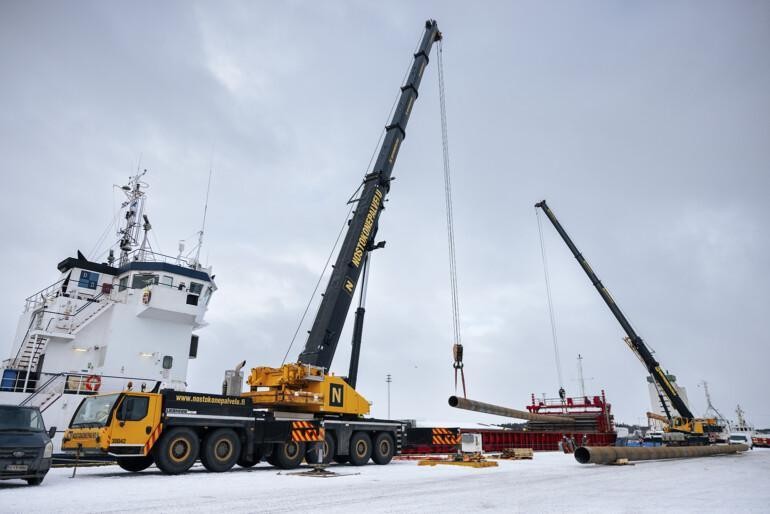
He tells that as one mobile crane may weigh up to 300 tonnes, the bearing capacity of the quay also had to be ensured.
“We have placed massive steel plates under the mobile cranes so that the weight is directed at the quay evenly.”
Movements need to be co-ordinated
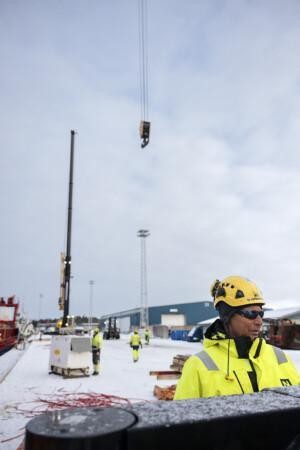
Sauli Ruohola and Juha Rask, mobile crane operators of Nostokonepalvelu Rn, also say that the size of the pipes is exceptional. The work is made more challenging by the fact that two cranes are lifting the same pipe simultaneously at different ends.
“We have to co-ordinate our movements precisely. We stay in touch all the time using walkie-talkies”, Mr Rask says.
“Luckily the weather is calm. The work would be considerably harder with heavy wind”, Mr Ruohola adds.
Work continues in the port
Finnsteve’s forklift operators are also required to co-operate precisely. In the moving manoeuvre, there is a forklift at each end of the long pipe.
If an ocean liner takes its time to turn, the same goes for a 50-metre steel pipe as well.
“It’s a bit like dancing. Everything has to be in sync with the other one”, Mr Välimäki describes.
Finnsteve also handles the transfer of the pipes from the field area to Terramare’s construction site throughout the project. Terramare is building the quay for the Port’s new joint terminal, and the pipes will be used as its piles.
The piling project also involves shorter steel piles that are transported to Turku by road from a Finnish supplier.
Pipes get a hard filling
Sami Donner, Site Manager of Terramare Oy has also come to see the efficient unloading of Nordvliet.
He says that on the field, a conical tip will be welded to the pipes to help them sink into the ground.
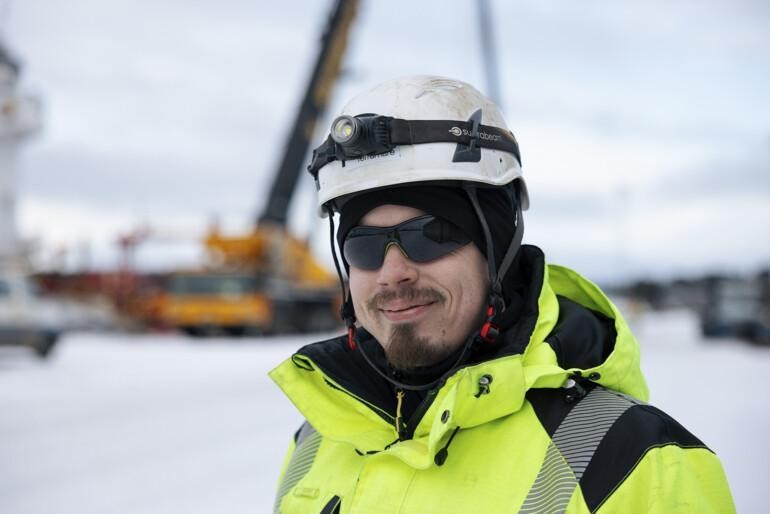
“Once the pipes are in place, they will be filled with sand and concrete. Then a work frame, a casting mould will be formed out of steel beams on top of the piling, and the concrete superstructure will be cast over it”, he describes.
The quay of the joint terminal is due for completion by summer 2026.
Text: Matti Välimäki
Photos: Ilari Välimäki

